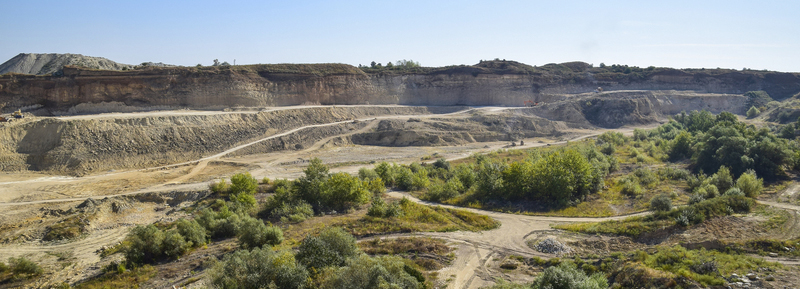A New Emphasis on MARPOL is a 2023 World Maritime Theme
An example of its environmental impact closer to home
Maritime shipping emissions account for about 3% of the global carbon dioxide output, roughly the same as aviation and, according to the World Economic Forum, if shipping was a country, it would be the sixth-largest polluting country in the world. In an attempt to combat this impact, the International Maritime Organization ("IMO"), a specialized agency of the United Nations, has set a goal to decarbonize the industry as soon as possible before the end of the century. This priority is exemplified by the IMO’s decision to make “MARPOL at 50 – Our Commitment Goes On” its 2023 World Maritime Theme. Under MARPOL the IMO already has begun to adopt measures to reduce emissions of greenhouse gases from international shipping. The 2023 theme can be expected to promote further discussion around the next phase of work to reduce the environmental impacts of shipping.
Although ship decarbonization targets are a relatively new maritime endeavor, the enforcement mechanisms to combat marine pollution are not new. To address marine pollution, nearly 50 years ago, an international conference was held in 1973, which resulted in the creation of the International Convention for the Prevention of Pollution from Ships, known as MARPOL. Later amended by the 1978 Protocol, the two treaties are collectively known today as MARPOL 73/78. The United States’ enactment of MARPOL is known as the Act for the Prevention of Pollution from Ships ("APPS").
The United States government has increasingly pursued maritime violations of MARPOL 73/78 and APPS. Depending on the circumstances, civil or criminal actions may be brought against individuals, as well as the corporate entities that own, manage, or operate the vessels that violate environmental requirements. The investigative and prosecutorial methodology is fairly predictable. A potential violation typically starts with an investigation by the United States Coast Guard into the circumstances of any alleged marine pollution. The Coast Guard may refer certain matters to the Environmental Protection Agency (EPA) for enforcement. In the most serious cases involving knowing violations, the Coast Guard may refer the matter to Department of Justice for prosecution under the applicable statute.
MARPOL Enforcement in the Delaware Bay - United States v. Vastardis
A recent example of typical enforcement of MARPOL 73/78 and APPS by the Department of Justice is United States v. Vastardis, No. 20-2040, 2021 U.S. App. LEXIS 36034 (3d Cir. Dec. 7, 2021). The Third Circuit Court of Appeals joined the Second and Fifth Circuits in holding that Coast Guard rules requiring vessels to “maintain an Oil Record Book” also require that records must be substantively accurate when the ship docks in the United States.
MARPOL 73/78 and APPS
MARPOL 73/78 and APPS require oil tankers weighing 150 gross tons or more and ships weighing 400 gross tons or more 1) to implement technology that regulates the amount of oil that can be discharged overboard during the regular operation of a vessel; and 2) to be equipped with oil-water separators ("OWS"), oil-content meters ("OCM"), and an Oil Record Book. See United States v. Anrogar, 459 F.3d 430, 432 (3d Cir. 2006). OWSs separate oil particles from the wastewater to be discharged overboard. OCMs sound an alarm if the oil content of ship’s overboard discharge contains more than 15 parts per million (“ppm”) of oil. Oil Record Books must document all treated and untreated discharges of oil-contaminated wastewater.
Under Coast Guard rules adopted to enforce MARPOL and APPS, entries are required in the Oil Record Book whenever certain machinery operations, such as using an OWS, occur and the master or “other person having charge of a ship” is responsible for the maintenance of the log. See 33 C.F.R. § 151.25. A person who knowingly violates this rule commits a felony subject to criminal penalties under APPS.
APPS provides at 33 U.S.C. § 1902 that it applies “to a ship of United States registry or nationality, or one operated under the authority of the United States, wherever located.” Foreign-flagged vessels are subject to APPS in the navigable waters of the United States, the exclusive economic zone of the United States, and the ports or terminals in the United States.
Factual Background, Procedural History and Trial
Nikolaos Vastardis was convicted and sentenced for crimes that allegedly occurred while he was the Chief Engineer onboard a Liberian-registered tanker, the M/V Evridiki. Vastardis, as Chief Engineer, was responsible for the Oil Record Book. When the M/V Evridiki entered port in the Delaware Bay, the Coast Guard performed an inspection, and found that the OWS had a hidden valve that allowed the OWS to give a reading of 0 ppm. When the hidden valve was open, the OWS gave a reading of 40 ppm or higher, well over the 15 ppm limitation.
Vastardis was charged in a four-count indictment with violations including (1) knowingly causing the failure to maintain an accurate Oil Record Book (33 U.S.C. § 1908); (2) falsification of records under the Sarbanes-Oxley Act (18 U.S.C. § 1519); (3) obstruction of justice, in presenting false Oil Record Book entries and deceiving inspectors (18 U.S.C. § 1505); and (4) false statements in connection with a federal investigation (18 U.S.C. § 1001). Following a seven-day trial, a jury found Vastardis guilty on all counts and he was imposed a $7,500 fine, a $400 special assignment and three years’ probation. As a condition of the probation, Vastardis was barred from entering the United States.
The Requirement to Maintain an Accurate Oil Record Book On Appeal
On appeal, Vastardis argued that the requirement to “maintain” an Oil Record Book only required a ship to physically possess an Oil Record Book, not that it be accurate. The Third Circuit disagreed, joining in the standard set forth by the Second and Fifth Circuit Courts of Appeal, finding that “[t]he recordkeeping provision would make little sense if, as Vastardis proposes, it required that ships only physically possess an Oil Record Book in any state of completeness or accuracy.” The Court affirmed the other charges as well, but vacated the condition that prohibited Vastardis from entering the United States, finding Vastardis’s career depends on travel in international waters and a condition of banishment impinges upon freedom of movement and could potentially interfere with the livelihood of a foreign national.
Conclusion
The IMO’s World Maritime Theme for 2023, “MARPOL at 50 – Our Commitment Goes On,” celebrates MARPOL’s legacy. The decision in United States v. Vastardis is only a recent example of its local impact. The 2023 emphasis on MARPOL forecasts new decarbonization initiatives and the potential adoption of further measures to enhance energy efficiency of ships. The shipping sector should prepare for new rules and initiatives in the United States arising from the emphasis on MARPOL.
For more information, please contact the author Holli Packer at HPacker@riker.com or any attorney in our Environmental Practice Group.
|











